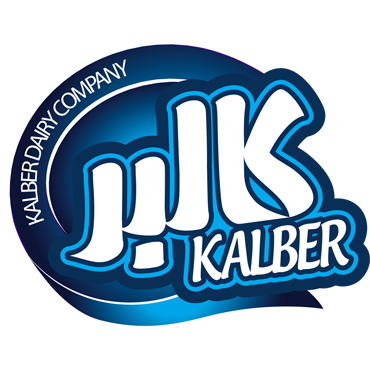A Guide to Feta Cheese
The basic characteristic of feta cheese is salty and tangy with a creamy and crumbly texture.
What Is Feta Cheese And Where Does It Come From?
Feta cheese is traditionally produced from sheep's milk. Mixtures of sheep's and goat's milk also give Feta cheese of good quality, as long as the proportion of goat's milk is < 20%. Traditionally, the rennet for Feta cheese-making was produced by the cheese makers themselves from the abomasa of lambs and kids slaughtered before weaning, but at present traditional rennets and commercial coagulants are being used together in a ratio 1: 3 (traditional: commercial). Pasteurized milk is used in the manufacture of traditional Feta cheese. Yogurt starters (blends of Streptococcus thermophilus and Lactobacillus delbrueckii subsp. bulgaricus) are traditionally preferred by cheese makers, especially in Greece.
Feta cheese has been made in Greece for thousands of years. It's even thought that feta is described in Homer's Odyssey. Also, 'Feta' is derived from the Greek word for a slice and It is one of the "healthiest cheeses in the world".
The basic characteristics of feta are salty and tangy with a creamy and crumbly texture. There are slight variances, however, in flavor and texture, depending on what type of milk is used (cow, sheep, or goat) and where the feta is made. The better-tasting fetas are cured in a brine and aged for four to six weeks, essentially pickling the cheese and intensifying the salty and sharp flavor.
According to Chef Priya Dikshit, "Due to its strong flavor, just one ounce as part of your meals is enough. This one-ounce serving contains 69 calories and only 5.9 grams of fat, of which 4.23 grams are saturated, while Cheddar has 9 gms of fat in a similar serving size". Feta cheese contains up to 1.9 percent conjugated linoleic acid (CLA) a fatty acid known to help improve body composition, decrease fat mass, and increase lean body mass.
For additional information, you can refer to this blog, Persian Feta vs Greek Feta Cheese.
How Long Will It Last?
Kalber Feta Cheese can be used as a quick appetizer, or put on so many dishes like roasted potatoes, pizza, spaghetti, bacon, chicken, and salads for more flavor. Keep the feta in its cup and it stays fresh for weeks or even months.
Protein:
In addition to cheese fats and calcium, feta has a high protein content sitting at 4.8 grams of protein per 28-gram serving.
Calcium:
A 28 gms serving of feta cheese contains nearly 140 mg of calcium, making it one of the best dietary sources of calcium.
Vitamins:
Feta cheese packs in vitamin B6, Vitamin A, and phosphorous. It also has 0.6 micrograms of vitamin B12.
Probiotics:
Feta cheese also contains probiotics, which also help the immune system fight infection and disease. It has been shown to contain lactobacillus plantarum, which accounts for about 48 percent of its bacteria.
Sodium:
Feta is high in sodium and contains 266 mg of sodium in a one-ounce serving, which can account for up to 11 percent of your RDI.
Industrial Production of Structured Feta Cheese
The technology of the manufacture of Feta cheese as described here is the traditional one. Over the past few decades, many advances have taken place in the cheese industry. Mechanization and automation in cheese-making have enabled much progress in the marketing of Feta-type cheeses at an international level. Modern technologies have replaced old-fashioned techniques in the processing of milk into cheese, involving ripening, coagulation, cutting the coagulum, and drainage.
The initial acidity of the milk for Feta cheese should be < 0.25% lactic acid, or the pH should be > 6.5. Before the addition of the rennet, the milk is standardized to give a casein-to-fat ratio of 1: 1 and then either pasteurized at 72°C for 15 s (HTST method) or heat-treated at 65–68°C for 30 min (Holder method). Calcium chloride is used with heat-treated milk to restore the calcium balance after heating. Coagulation is achieved at 32°C in 45–50 min. Lactic starters are usually added at 32–34°C, 15–30 min before rennetting.
When coagulation is complete, the curd is cut into cubes (2–3 cm3) and, in order to increase cohesion, it is left to stand in the whey for about 5–10 min. Afterward, the cubes are transferred into a mold, and drainage of the excess whey takes place. During drainage, at 14–16°C, the molds are turned upside down every 2–3 h. When the desired amount of whey has been removed, the fresh cheese is taken out of the mold and cut into blocks. The blocks are dry-salted by sprinkling granular salt onto all their surfaces, and this process is repeated three to four times over several days. The salted blocks are left on the cheese table for about 10–15 days, to allow the formation of thick skin on the exposed surfaces. Then the cheese blocks are washed with water or brine and placed in a barrel. A brine solution containing 6–8% NaCl is added and the barrels are left for maturation at 14–16°C until a pH of 4.4–4.6 is reached. The final salt content of the cheese is about 3.0%. Details of the industrial production of structured Feta cheese are summarized in the figure below.

|
https://www.thespruceeats.com |
|
Feta Cheese, Barbaros H. Özer, in Encyclopedia of Food Microbiology, 1999 |
|
#fetacheese #dairyproducts #kalberdairy #kalbercheese |

.jpg)
-min.webp)
-min(1).webp)
.webp)
 (2).webp)
.webp)
.webp)